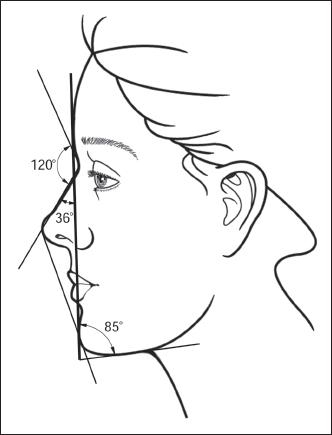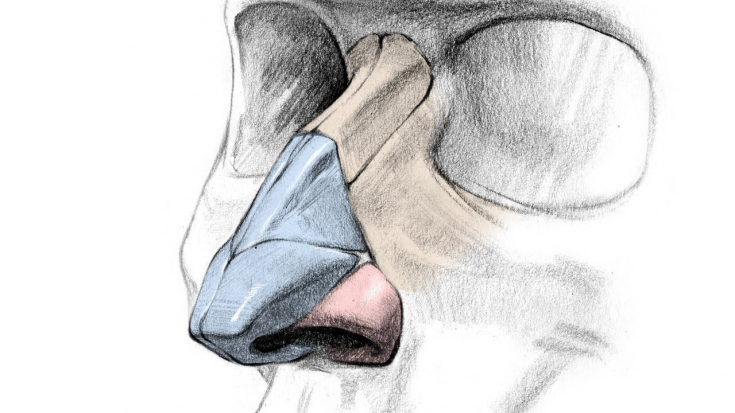Non-surgical rhinoplasty is one of the most popular procedures in the world and requires the most advanced knowledge and skills from the doctor. In the hands of an experienced injector, this is a very powerful and useful procedure that can correct many aesthetic problems in the nose.
Using the perfect filler and technique, practitioners can correct dorsum problems, eliminate hump, elevate the tip of the nose, change the width of the nose, and more. In addition, dermal fillers can be used to correct deformities after surgical rhinoplasty without surgery.
On estet-portal.com, read about the anatomical and technical features of injection rhinoplasty in an interview with dermatologist, cosmetologist, leading specialist of the Laserhouse clinic Milana Kovaleva.
Anatomy of the nose: what you need to know before injection rhinoplasty
М.К.: In order to properly perform an injection rhinoplasty, you need to have a good understanding of its anatomy. Understanding differences in nasal skin thickness is important as it affects the depth of filler injection.
The skin of the upper third of the nose is the thickest (3.3 mm) and thins towards the middle of the nose (2.4 mm). The thickness of the skin at the tip of the nose is slightly thicker (2.9 mm), and thinner in the area of the columella (2.3 mm).

The muscles of the nose lie deep under the skin and consist of four groups: elevators, depressors, compressors and dilators. The superficial musculoaponeurotic system of the nose (SMAS) connects all the muscles, blood supply and nervous system of the nose.
The nose has a very rich blood supply, which must be taken into account when injecting. The arterial supply of the nose is represented by two branches:
• from the internal carotid artery: anterior and posterior ethmoid arteries and branches from the ophthalmic artery;
• from the external carotid artery: sphenopalatine, great palatine, superior labial and angular arteries.
Nasal veins usually correspond to arteries. Unlike other veins in the body, facial veins do not have a valvular system, and a direct connection to the cavernous sinus enhances the intracranial spread of infection on the face.
Read the most interesting articles in Telegram!
Lymphatic vessels are located in the superficial nasal mucosa and drain into the retropharyngeal nodes and anteriorly into the upper deep cervical nodes and/or submandibular glands. The nerve supply to the nose is provided by the first two branches of the trigeminal nerve.
Assessment of nose proportions: beauty in harmony

M.K.: In order to perform high-quality rhinoplasty, you need to understand what an ideal profile looks like. To do this, it is important to evaluate the proportions of the nose.
The distance between the wings of the nose should be equal to the distance between the inner corners of the eyes and should take up a maximum of 1/5 of the width of the face.
The angle between the forehead and the nose, on average, should be 135-145 degrees.
The nasolabial angle between columella and filtrum is ideally about 90-95 degrees in males and 100-105 degrees in females. If you look at the profile – columella should be 2-4 mm long.
The bridge of the nose should be level at the midline.
Viewed from below, the tip of the nose and nostrils of the "ideal nose" form a triangle. Ideal traits may differ by race and ethnicity, so these individual characteristics must be taken into account before the procedure.
Juvéderm® VOLIFT® is the number one drug for premature aging
Peculiarities of nose contouring
M.K.: For rhinoplasty, a dermal filler should be used to ensure long lasting results.
Optimal for injection rhinoplasty is a filler from the Allergan company, created on the basis of Vycross&trade technology; - Juvederm®VOLUMA™. Thanks to its unique structure, it provides the longest lasting correction and the most natural result.
Injections into the nasolabial angle will increase the distance between the columella and the edge of the vermillion.
Filler injections into the columella area help elevate the tip of the nose, making the nose look longer in profile.
The introduction of a filler into the area of the tip of the nose allows you to make the nose more snub. To obtain a straight nose and to correct a saddle nose after surgical rhinoplasty, it is necessary to inject the filler into the area of the cartilaginous dorsum of the nose. And in order to eliminate the hump on the nose – the filler should be injected at the level of the bony dorsum of the nose.

Injections into the alae of the nose will reduce the height of the nostrils and change their shape. Thus, by understanding the anatomy of the nose, and choosing the right injection points, it is possible to perform an injection rhinoplasty, which, as a result, will be in no way inferior to surgical rhinoplasty.
Original preparations of the Allergan company You can only purchase from the official distributor.
You may also be interested in: Physics and mechanics of lifting: features of the use of hyaluronic acid fillers







Add a comment